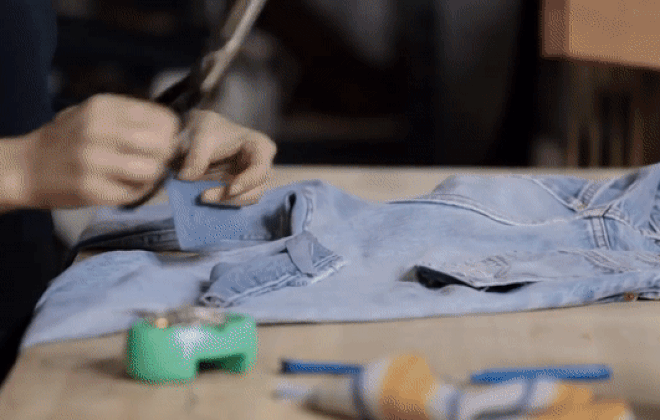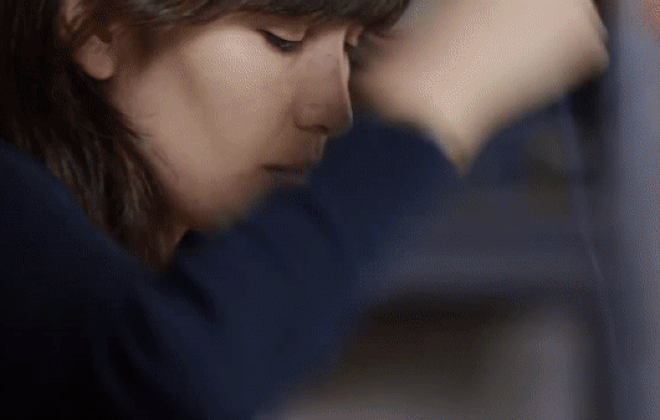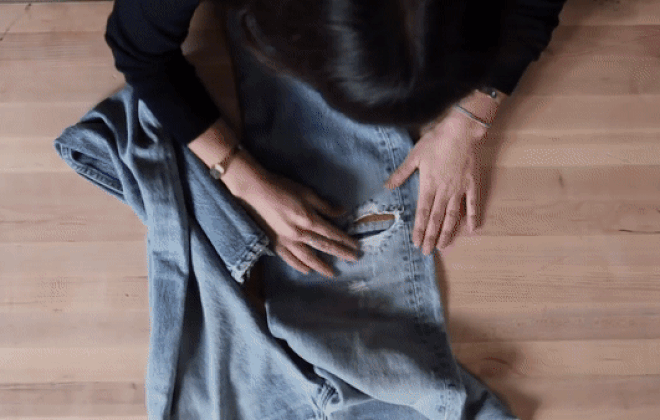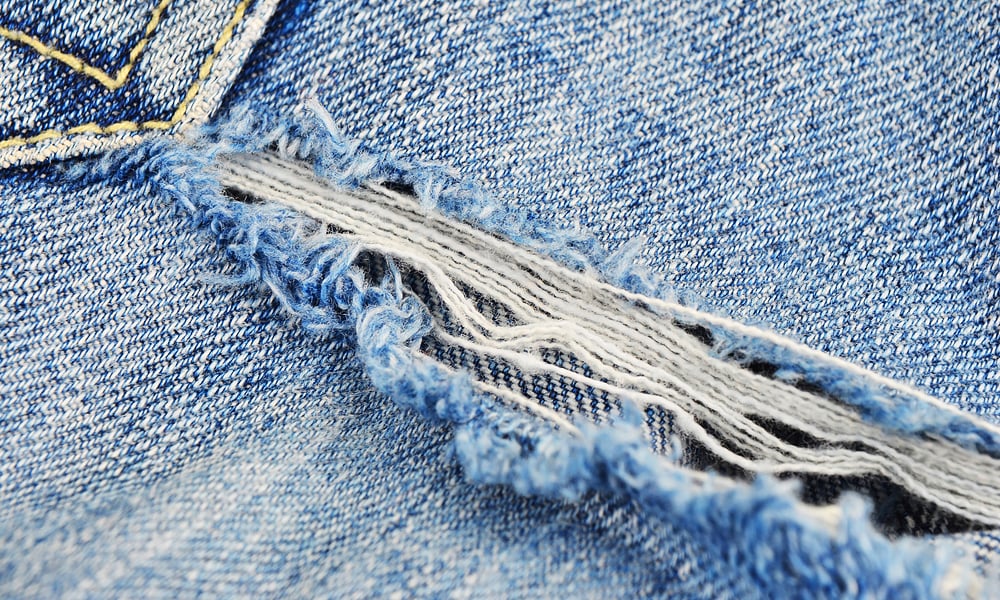There’s something to be said for a well-worn garment. The stains, tears, holes, and scratches tell a story. That delicious bowl of pasta left a teeny little red spot on your linen pants. Or you ripped a hole in your jeans on a long bike ride. No big deal. But sometimes, these blemishes go from endearing to unseemly. You can’t be showing up to the party with holes in the ol’ crotch region of your beloved denim pants. But we’re not advocating that you dump your old pair of jeans. And sure you could go to a tailor or a denim repair pro. But we’re advocating for some DIY for those ripped jeans. We’re going to help teach you how to patch your jeans.
What You Need to Repair Your Jeans
Depending on the tear or hole you’re trying to mend, you might use one of a handful of repair methods. Whether you need to sew up a small tear in your denim or patch a large hole in your jeans, you’re going to need a needle and thread. Most basic sewing kits will do the job. Plus, if you’re going to embrace the DIY lifestyle, a decent sewing/repair kit is a worthwhile investment. The thread you choose is purely up to you. Maybe you want a contrasting color for aesthetic purposes. Or maybe you just want a seamless blend of colors. You should be able to find denim thread matching your wash of jeans. A simple white cotton thread almost always looks great on a pair of jeans, too.
You might not need extra denim fabric if you’re repairing a slim, small tear. But, for larger holes or rips, it’s best to reinforce the area with some more denim. And to apply the fabric, there’s no better supplement than an iron. Fabric glue can work sometimes too, but we prefer the iron method. And, of course, a solid pair of fabric scissors is necessary for just about any repair job.
Do I Need a Sewing Machine?
Most modern households don’t have sewing machines anymore. So, unless you know a seamstress or seamster, it might be hard to find a sewing machine to borrow. While it might offer more security to your repair, it isn’t exactly necessary. You can craft a durable patch with just an iron, some fabric, and a needle and thread. But, if you do have a sewing machine, Levi’s actually produced a pretty great how-to video to patch your jeans.
How to Patch Ripped Jeans
Step 1: Trim the Edges
Trim away the excess strands of fabric around the edges of your tear or hole for a clean working area.
Step 2: Flip Your Jeans Inside Out
Unless you’re going for a unique aesthetic choice, it’s best to affix your patch on the inside of your jeans. You’ll end up with a sturdier fix and it’s easier to blend the patch with the original pair of jeans. At this point, it’s also important to put a bit of cardboard inside the flipped-out pant leg to protect your jeans.

Step 3: Cut Your Denim Fabric
Use your fabric scissors to cut your patch from the iron on denim fabric. Make sure to keep the patch just a bit larger than the hole itself.
Step 4: Iron Your Patch
Follow the instructions on your denim fabric to iron on your patch. Usually, it’ll take about a minute or so of ironing. Make sure to use even heat and pressure while ironing.

Step 5: Sew Around the Edges
For extra protection and to ensure your patch stays firm, go ahead and stitch with a criss-cross pattern around the edges of your patch (once it’s cool, of course). When wrapping up, make sure to tie off your thread on the inside of your jeans.
Optional Step 5.5: Stitch Across Your Patch
If you’re not satisfied with the simple look of a denim patch, you can stitch across the outside of your jeans. You can either use the matching denim thread or go for a white cotton thread. Start from the inside of your jeans and stitch back and forth horizontally with your thread. Don’t pull too tight – you don’t want to scrunch up your pant leg. Make sure to completely cover the patched hole and then tie off your thread on the inside of your jeans.

Step 6: Wear Your Jeans!
Now that you’ve properly fixed your old pair of jeans, wear them with confidence! And if you get any more rips, now you know how to handle them.
Want to read more about caring for your denim jeans? Click here for Cool Material’s Guide to Denim.




